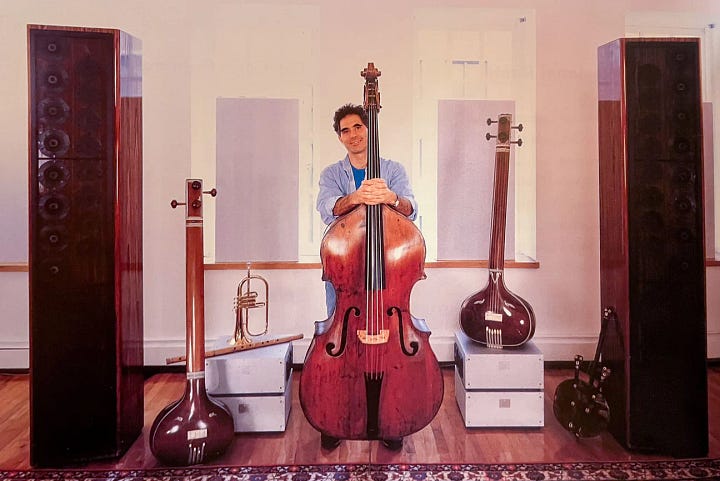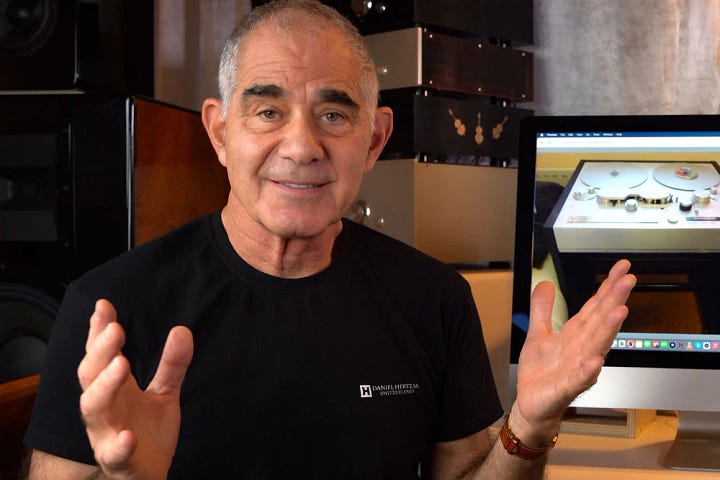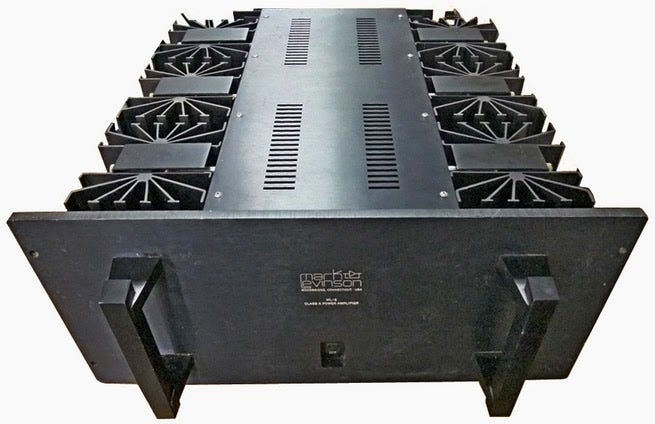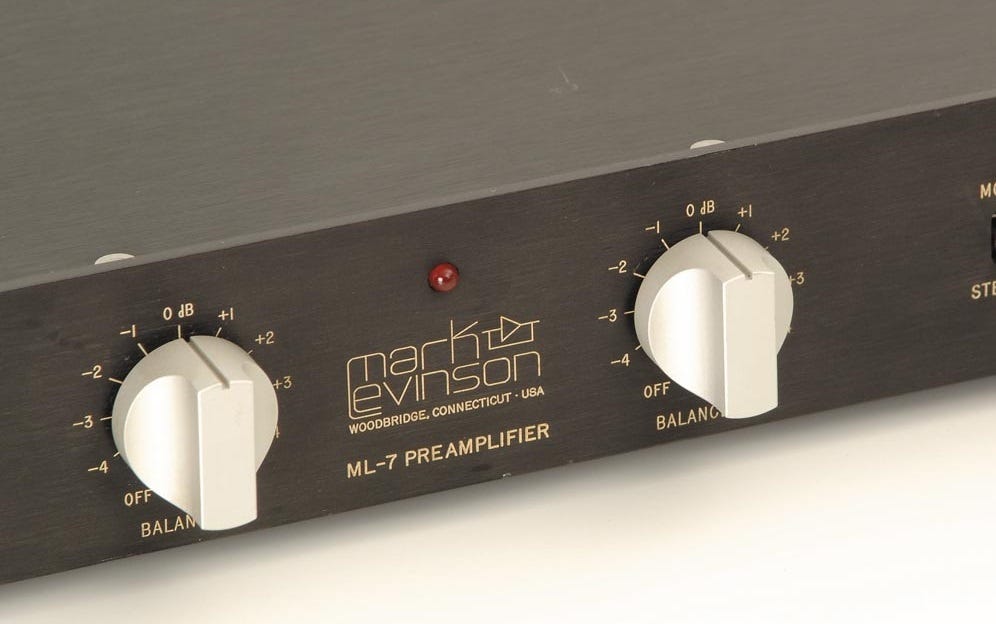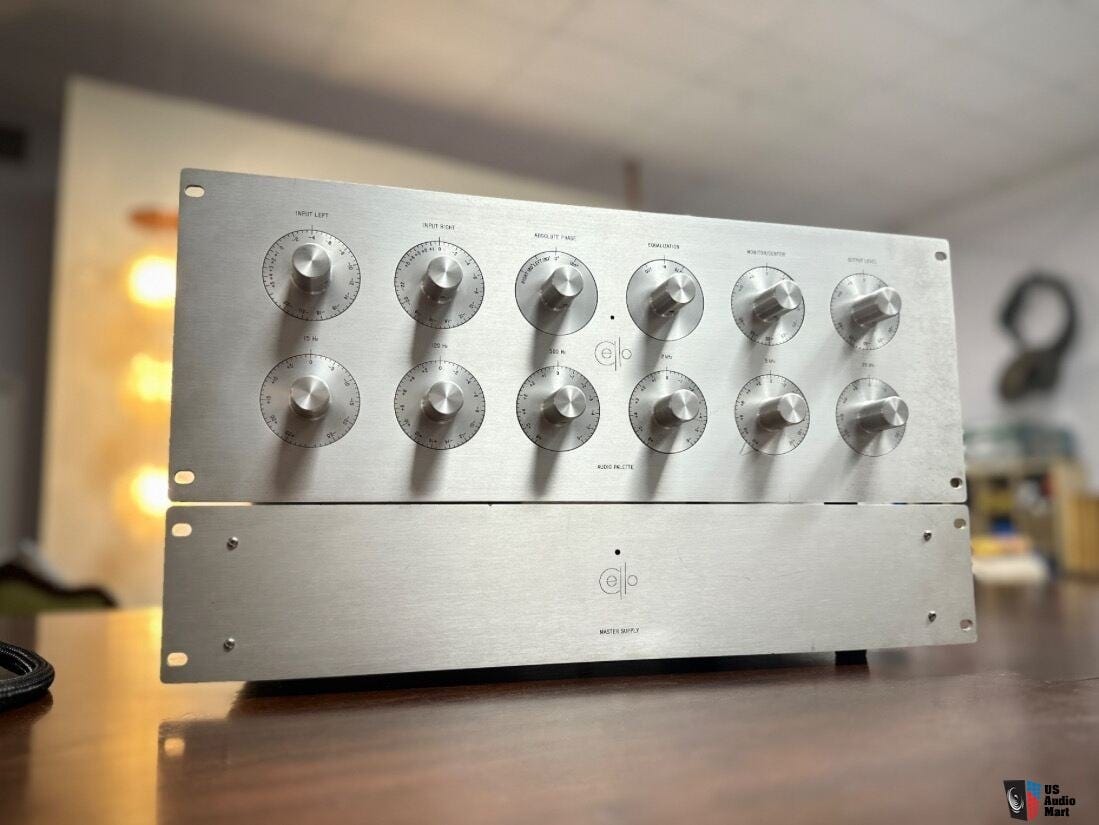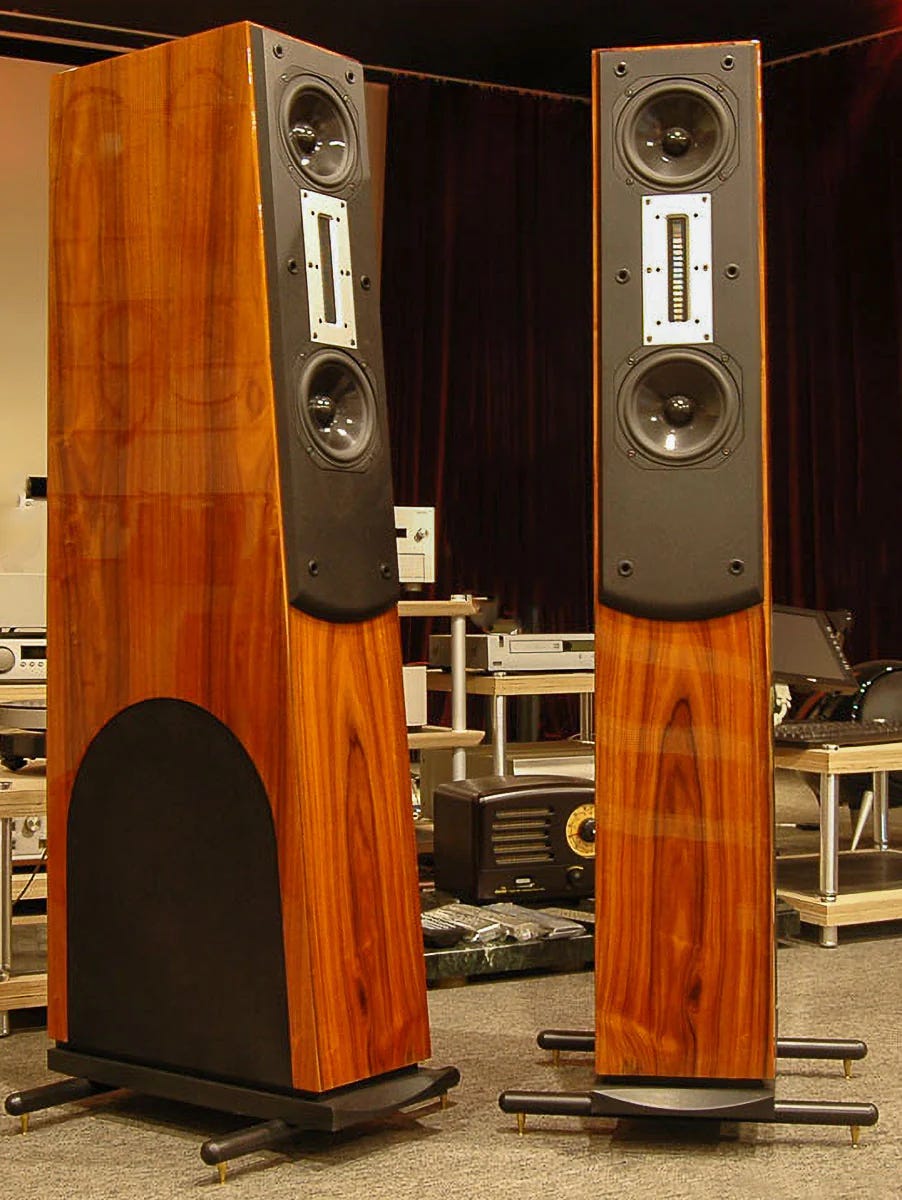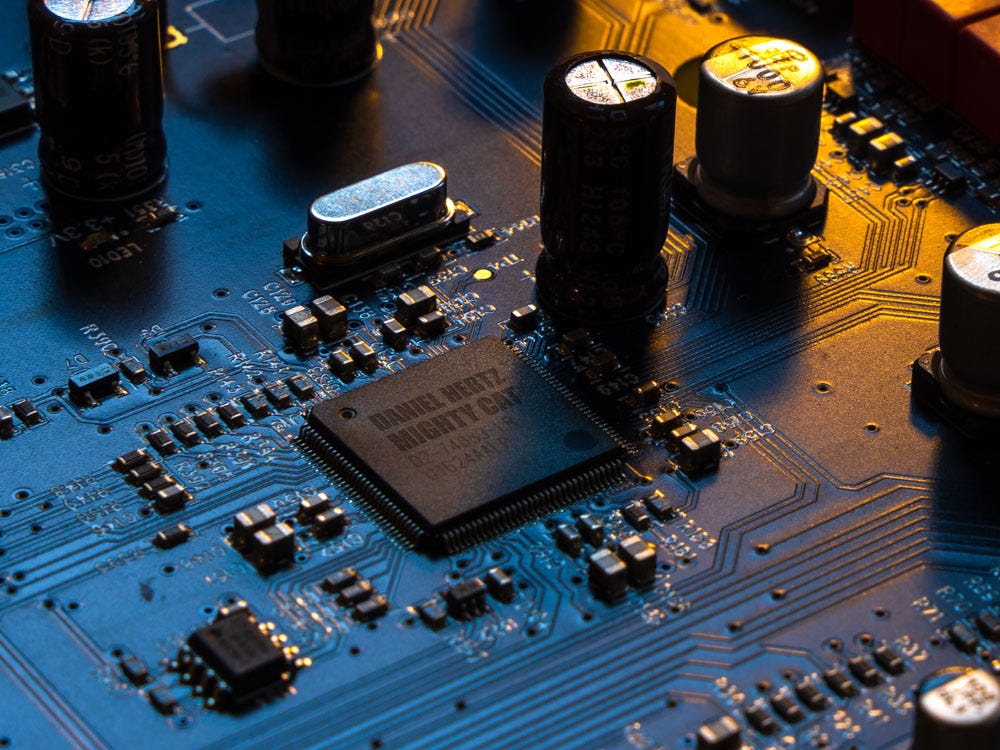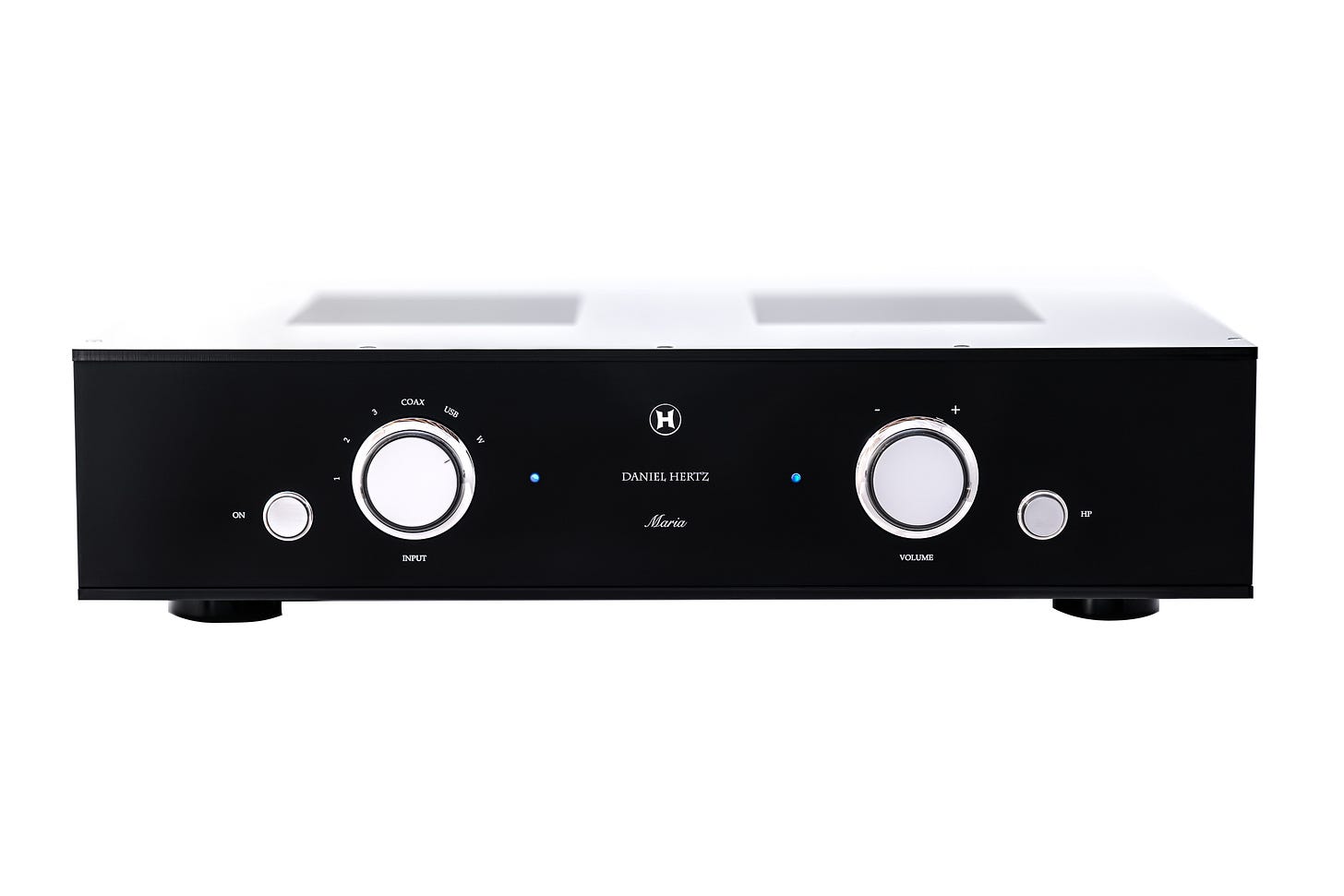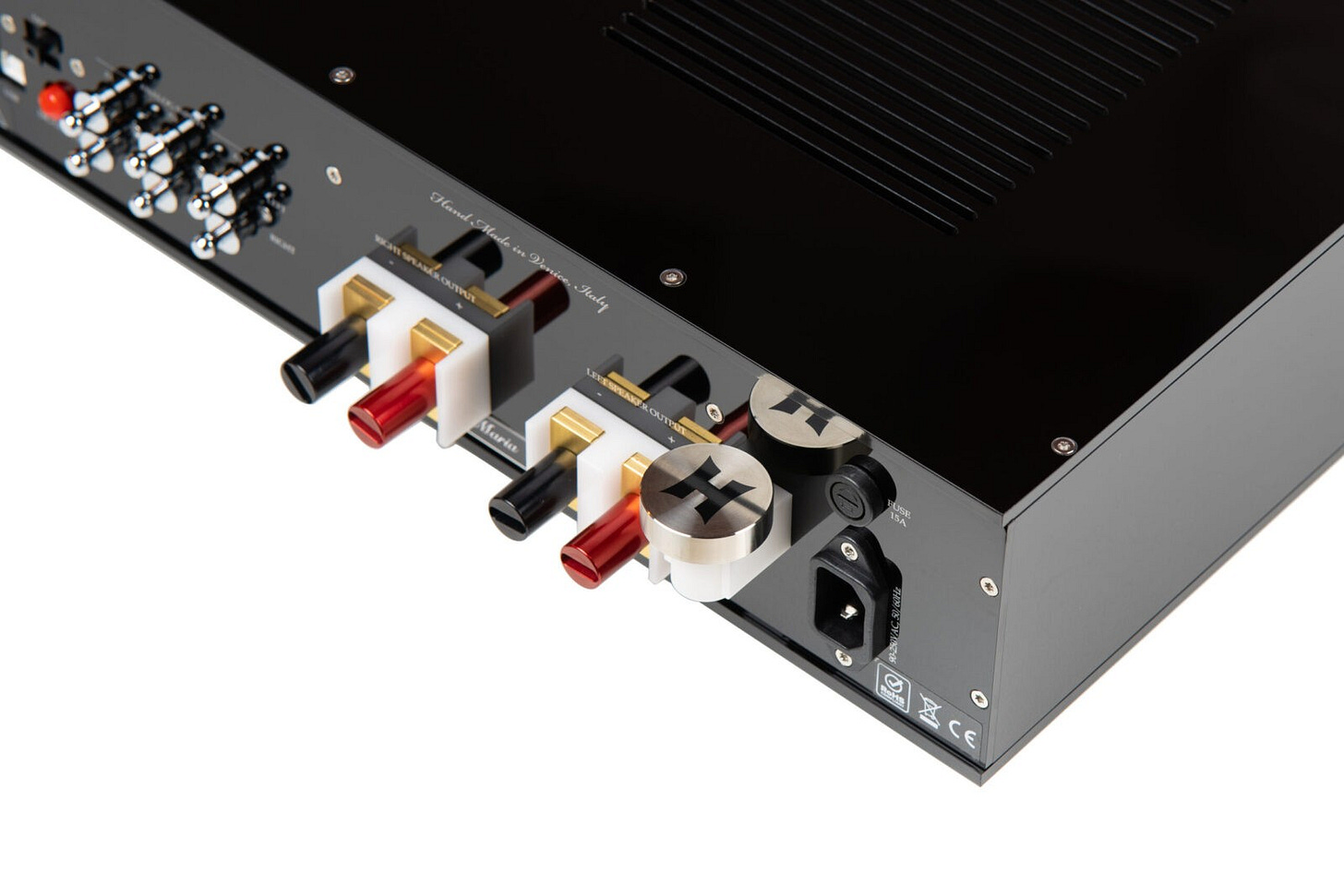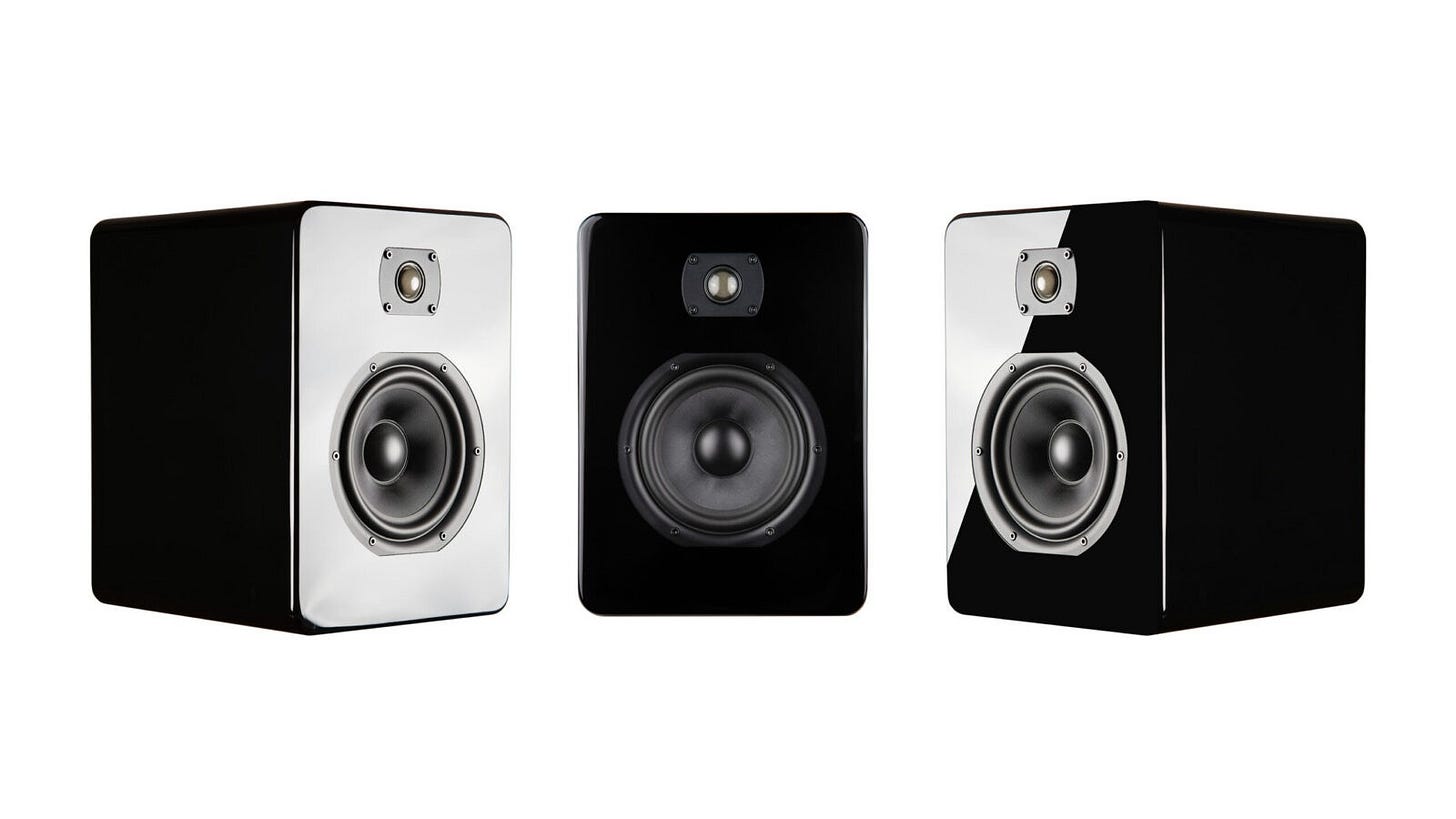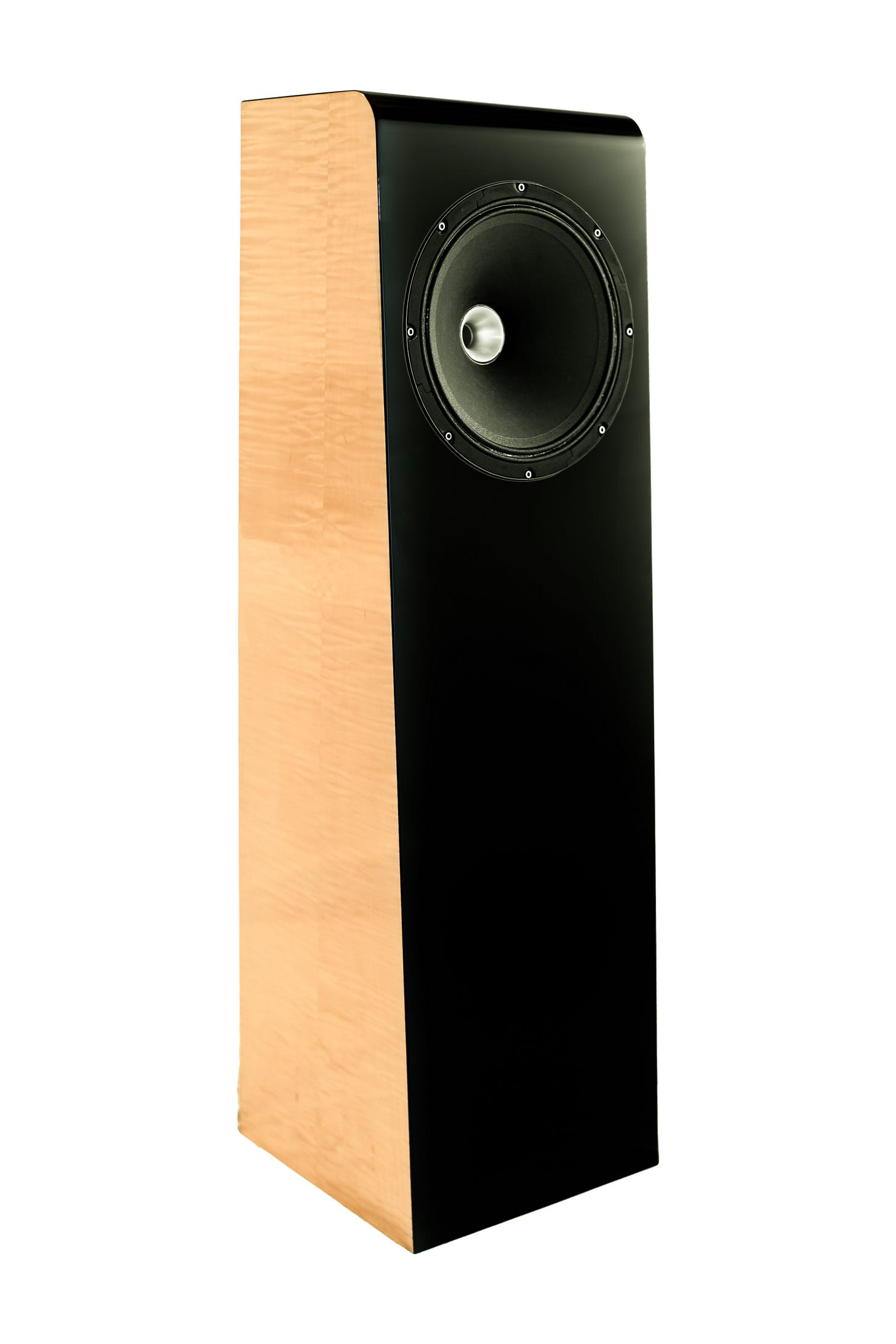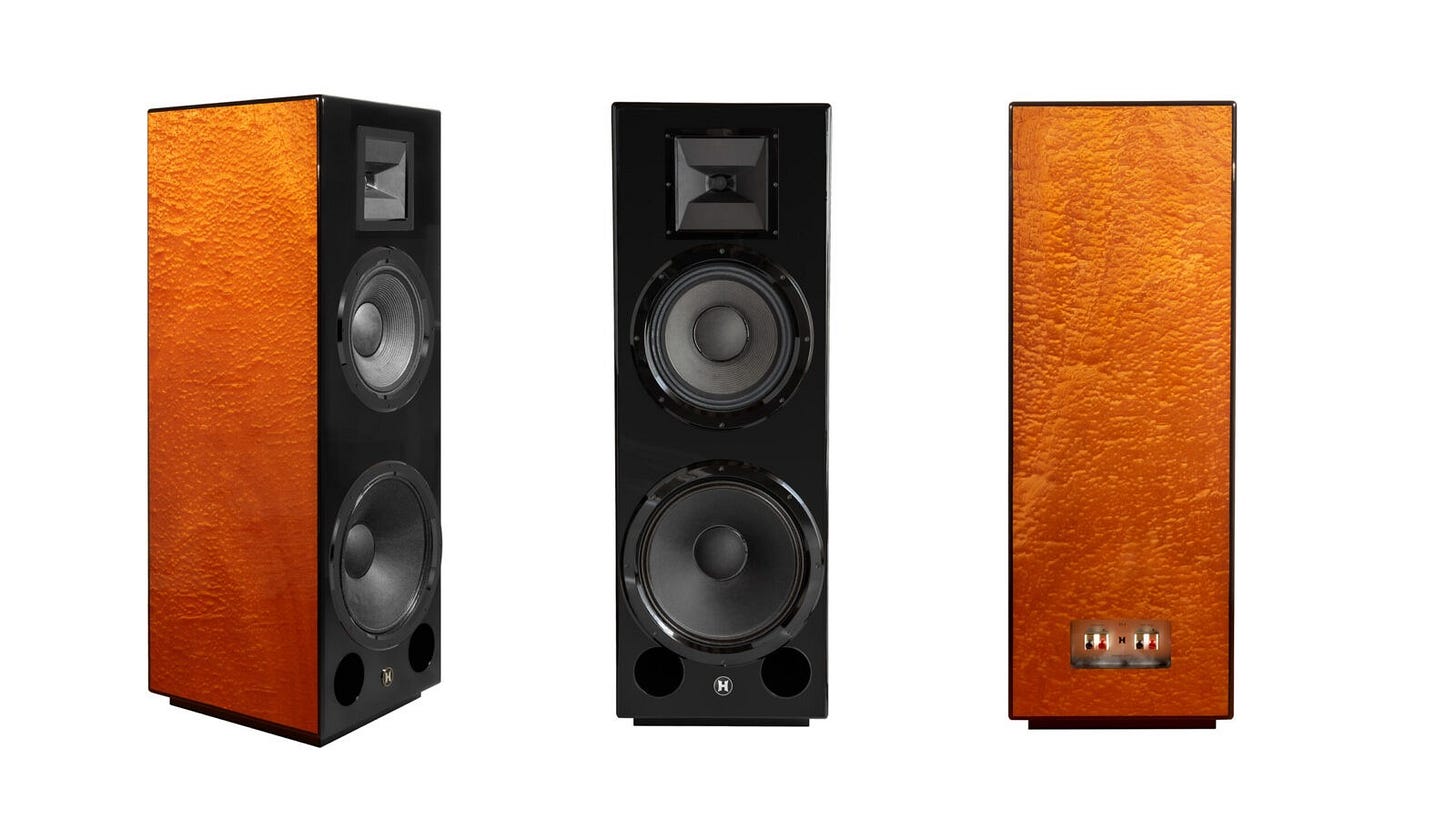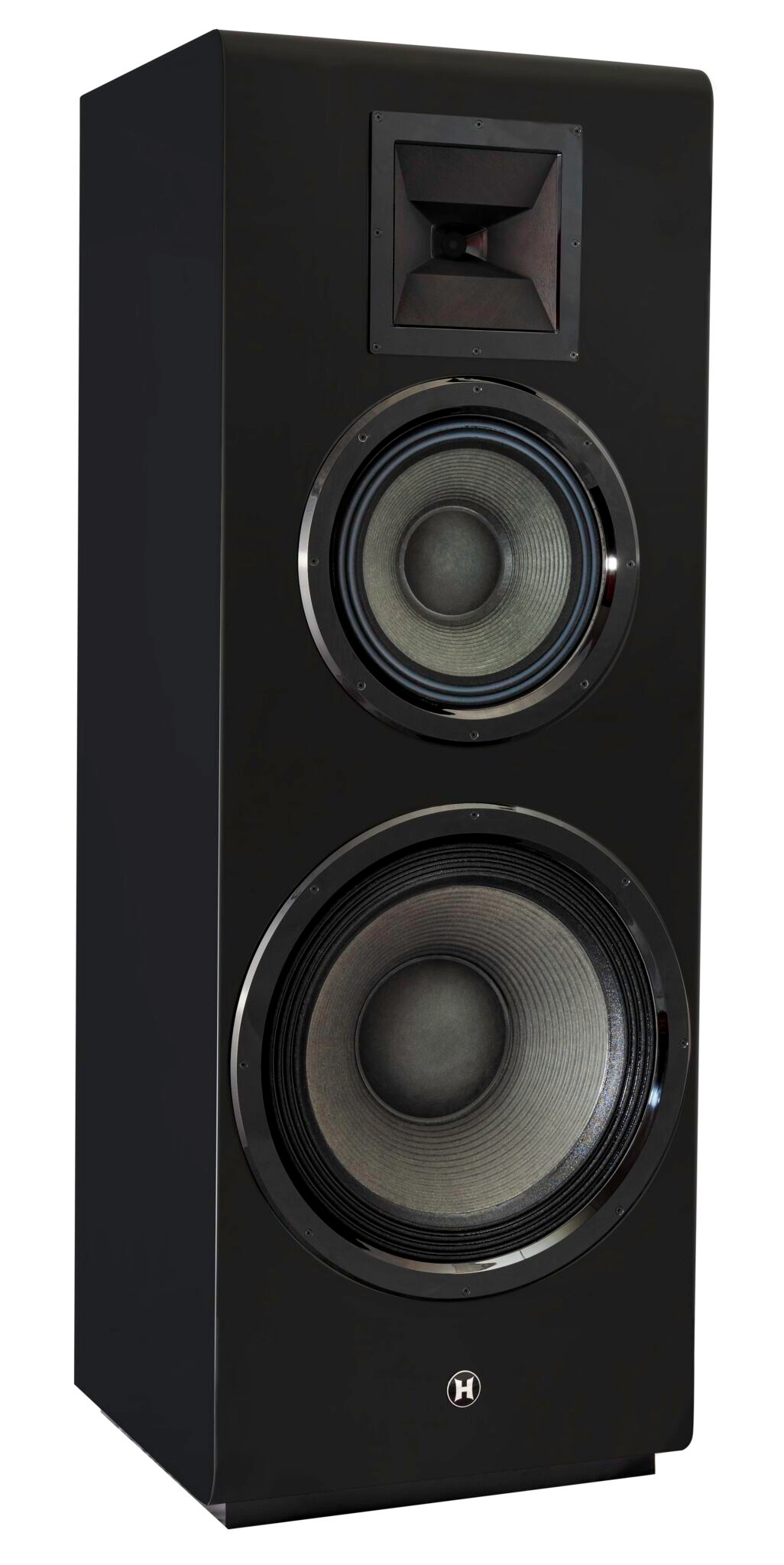Many great men and women start a movement or create a new standard in a particular field, but most often the baton is then passed on to the next generation of designers and inventors to improve things further, to reset the benchmark.
In 1972, aged 28, Mark Levinson formed Mark Levinson Audio Systems, a company dedicated to designing and manufacturing high-end audio equipment and in doing so invented the high end as we know it. Although many joined him on the journey to elevate the reproduction of the recorded arts, that benchmark followed him and in 2023 he has just raised it again.
In the beginning….
1946 - Mark Levinson was born in Boston, Massachusetts, USA.
1960’s (and beyond) - applied his skills as an accomplished bass player and trumpeter playing with the likes of John Coltrane, Sonny Stitt, Chick Corea, Paul Bley, and Keith Jarrett to name a few.
1968 - aged 21 he designs the mixing board that was used at the Woodstock Music Festival.
Early 1970’s - Whilst travelling to India to study Indian music, he stops en route in Switzerland and visits the Stellavox Company, presumably to purchase one of their portable tape recorders. Whilst there, he was so impressed by the build quality and the care with which Stellavox recorders are designed and made, that he decides to return home to start designing and supplying high quality audio components in the USA, inspired by the work of the Swiss company. He would later return to his initial journey and study classical Indian music with sarod master Ali Akbar Khan.
1972 - founded Mark Levinson Audio Systems, a company dedicated to designing and manufacturing high-end audio equipment, the very first of it’s kind.
MLAS’ first product was the LNP-2. This was a preamplifier intended for the professional user and sported a comprehensive range of features that was unique for the time.
These preamplifiers were crafted with exceptional attention to detail, even extending to the front and rear panel labels which were meticulously engraved and filled with white paint, as opposed to using screen-printed lettering that could easily fade or wear off with regular usage. Despite their notably high price tag of $1,750 at the time, thousands of these units found buyers, predominantly within the professional market.
1977 - Levinson has huge success with the moving coil amplifier, the JC-1. The initials pertain to John Curl, the designer. His initial foray into the realm of audio engineering began with his work on the design of tape recorders at Ampex. Subsequently, he achieved notable success by crafting amplifiers for the renowned American group 'The Grateful Dead.' These amplifiers came in two distinct iterations: one powered by batteries, known as the JC-1DC, and the other powered by mains electricity, named the JC-1AC. The success and admiration for these products gave Mark the impetus to continue with his purist and high end aspirations.
1977 - Levinson introduces the ML-2 amplifier, which gained recognition for its exceptional audio quality and became a benchmark for amplifiers in the industry.
The ML-2 was a monoblock amplifier with a power output of 25 watts per channel, operating in pure Class A mode. They boasted impressive specifications, weighed nearly 30kg each, ran very hot and priced at £3,600 for a stereo pair, ranked among the most expensive consumer audio products of its time.
It was revered for its ability to deliver new levels of transparency and speed.
1979 - The monoblock ML-6 preamplifier. Another no compromise, purist step forward for audiophiles at the time.
1980 - The ML-7 is released. Widely regarded by the audiophile market as the new Mark Levinson standard of excellence, the ML -7 quickly set a new bar for sonic excellence and three-dimensional imaging.
1984 - Levinson, looking for a new start with a fresh approach, establishes Cello as his new company. The choice of the name held personal significance, paying homage to Levinson's mother, an accomplished cellist. True to his track record, Levinson once more assembled a team of exceptional developers, comprising some of the industry's foremost talents. Levinson created radically new audio concepts, absolutely without compromise, at prices to match.
1992 - the launch of the Cello Palette. At that time, the high-end audio industry had largely forsaken built-in tone controls and external equalizers, citing concerns about their potential impact on signal purity. However, the Cello Palette dared to challenge this prevailing orthodoxy with a radical proposition. It argued that the ability to finely adjust the frequency balance wasn't just advantageous but indispensable. The rationale was simple: every recording had undergone equalization for specific audio systems during monitoring and mastering. If your own audio setup differed from those systems, you were missing out on the artists' true intentions. Moreover, many recordings exhibited pronounced imbalances in their frequency characteristics, demanding correction through precise playback equalization. The Pallete remains to this day a benchmark for audio design and a testament to Mark’s revolutionary thinking.
“I was speaking with Mark Levinson . . . hoping I would find something exciting to present to our readers and wondering if this visionary of the 1970’s was still able to run the leading edge. I did; he is.
Levinson has shifted focus from individual products to a complete system concept aimed at performance goals which have been thought impossible to achieve – until now. Instead of listening to equipment, one quickly forgets about components and is absorbed by the music. The total effect . . . is so astonishing that it is not easy to convey without sounding far-fetched.”
- Robert Serio, High Performance Review
1999 - founded Red Rose Music, an audio company with its own New York retail store on Madison Avenue. The business model of Red Rose was to create compact, relatively affordable products with very high-quality sound.
Mark is a renowned recording engineer and as part of Red Rose Music, he produced Various Artists: Live Recordings at Red Rose Music, recorded at the Madison Avenue premises late at night. He went on to master many recordings, highly regarded by audiophiles and music lovers alike. When Sony decided to develop the SACD, they needed reference recordings to demonstrate the new technology. They also needed expert recording engineers to prove its value to the music industry. Sony equipped Mark Levinson with one of ten prototype DSD (direct stream digital) recorders. He used this gear to make Live at Red Rose, one of the best-selling SACDs of all time, and the sole demonstration material used by Sony and Philips in their rollout of the format.
"Daniel Hertz is the culmination of my 50 years of work in music reproduction and introduces a new era of emotion and opportunity for those who want only the best."
- Mark Levinson
2007 - Mark Levinson creates Daniel Hertz SA, and like Cello, once again named using his parents for inspiration - combining his father’s first name with his mother’s maiden name to form Daniel Hertz. The first phase of this business followed a familiar design concept and ethos, covering the usual audiophile bases of preamplifiers, monoblock amplifiers etc, albeit with Levinson’s requisite sensational sound quality and exquisite tastes for aesthetics.
Mighty Cat
But Mark, ever the innovator, wanted to push the boundaries yet again.
In 2022, after many years of research and development, Daniel Hertz announced the release of the Mighty Cat Semiconductor and C-Wave technology, heralding in the next phase of Daniel Hertz and the first fundamental technology advancement in audio since the 1970s.
Daniel Hertz is the only audio equipment manufacturer that develops its own proprietary Audio IC (integrated circuit) technology beginning from the silicon up. The Mighty Cat Class D Audio Chip is the only audio IC capable of running Daniel Hertz patent-pending software, which provides the sound and feeling of pure analogue from digital content, including streaming. Mighty Cat provides all the functions of separate components, including; DAC ( Digital to Analogue Converter), Preamplifier, Power amplifier with up to 12 channels, crossover, and headphone amplifier. This is game changing and benchmark setting.
Mighty Cat is fully configurable and programmable. The entire signal flow is configured by software and can be reconfigured anytime. This allows Daniel Hertz systems to be configured, for example, as a two-channel stereo amplifier, a four-channel amplifier for bi-amplified speakers, or a high-power (800WPC) two-channel amplifier. Speaker tuning can be fine-tuned at any time. Active crossovers can be programmed for bi-amplified speakers, with levels fine-tuned to perfection. The frequency response of the headphone jack can be tuned for any specific headphone. The Mighty Cat chip offers resolution second to none in a highly integrated design with a pure signal path that eliminates sources of coloration and degradation.
The internal architecture of Daniel Hertz Mighty Cat chip is designed to be exceptionally linear, surpassing the transparency of large, heavy, expensive heat-producing pure analogue amplifiers. In addition to being an amplifier, Mighty Cat also performs the functions of the ( DAC ) digital-to-analogue converter, and signal processor for active crossovers and more, providing an extremely short signal path that eliminates sources of sonic coloration such as long lead lengths, multiple power supplies, ground loops, signal loading, noise pickup, and inductance.
C-Wave
Everyone falls in love with pure analogue audio – LPs and open reel tape recordings. Digital audio is often tolerated or multiple products and systems are introduced to soften its effects. Daniel Hertz C Wave technology is not a gimmick or a sound effect. C Wave is the first fundamental improvement to digital audio since it was invented in 1976.
Pure analogue audio is based on a continuous waveform. Digital audio is based on a non-continuous (sampled) waveform. Years of testing with advanced computer-based heath diagnostic equipment shows that the human brain is fatigued or stressed by the digital audio waveform. Daniel Hertz C Wave fills in the spaces of the PCM digital audio waveform with original musical information – not sound effects – which enables the brain to respond like to pure analogue, with no fatigue or stress reaction.
A digital square wave is a type of non-sinusoidal waveform that abruptly alternates between two levels, while an analogue continuous wave is a type of sinusoidal waveform that oscillates smoothly and continuously between two levels. Square waves are characterized by sharp transitions between high and low levels, while continuous waves are characterized by smooth transitions between high and low levels. C-Wave technology creates “bridges” between the waveforms, filling in those abrupt level changes. The phrase “digital like analogue” has been used and searched for in HiFi since digital’s inception, but only now is it fully achievable - Daniel Hertz is the only company in the world that has fully defined the digital problem and created a solution and it is incredible.
The Maria amplifier, controlled and run by the Mighty Cat chip with C-Wave features 3 analogue inputs with one megohm input impedance, an innovation introduced by Mark Levinson, which eliminates loading of analogue source devices. The Maria’s digital inputs include Wi-Fi (Airplay), Bluetooth, digital coaxial, and USB Audio 2.0 for connection of a Mac/PC or audiophile streamer/music server. We have had astonishing results with a Diretta equipped Pachanko Labs Roon server directly connected via USB.
High sensitivity, ground breaking speakers
There is much more to describe and write about the latest line-up from Daniel Hertz, this Substack is just a taster of the innovations and craftsmanship on display. If Mark Levinson’s passion for audio inspires you, and if HiFi is what excites you, you owe it to yourself to head over to www.danielhertz.uk to read more. We would love to arrange for you to hear it too, because only then will you understand the revolutionary next step Might Cat, C-Wave and Daniel Hertz has to offer.
Mark Levinson's influence on high-end audio is profound and enduring. His commitment to excellence, innovative engineering, and dedication to pushing the boundaries of audio quality have left an indelible mark on the industry, shaping the way we perceive and experience music and sound. He invented the High-End and now with Daniel Hertz he has perfected it.
